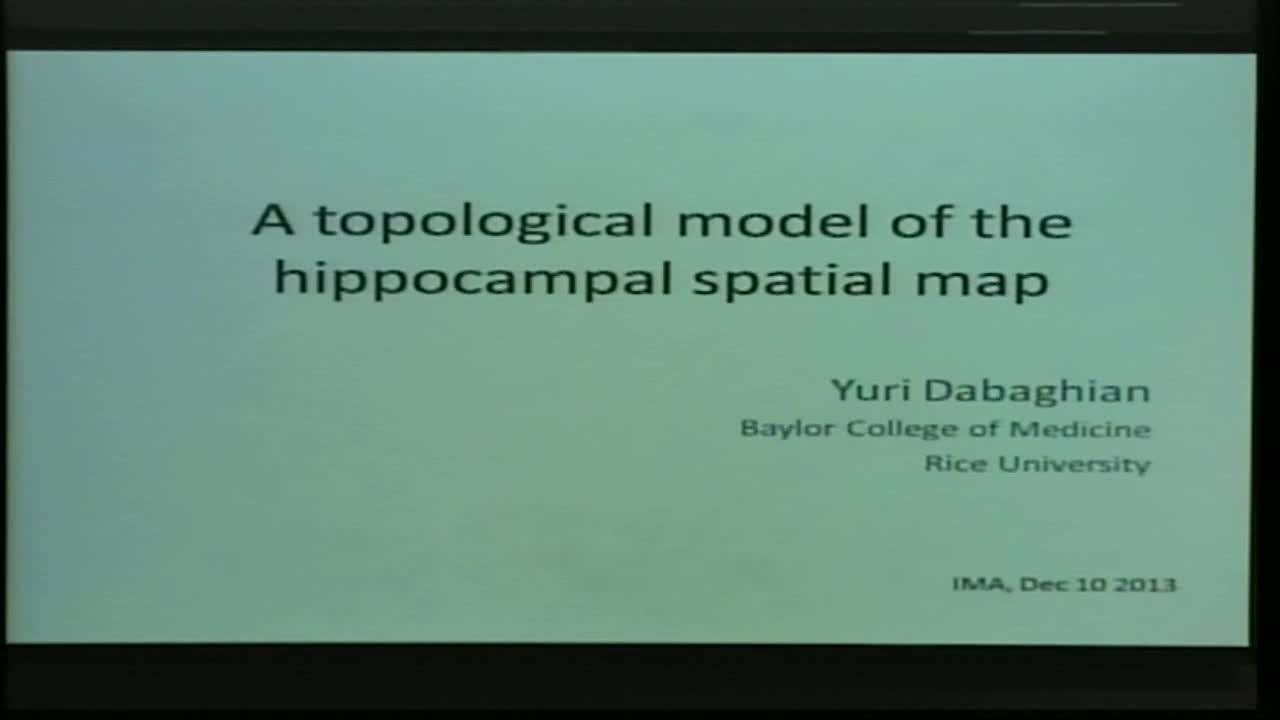A Topological Model of the Hippocampal Spatial Map
Presenter
December 10, 2013
Keywords:
- Spatial models
MSC:
- 91B72
Abstract
For an animal to successfully navigate its environment, it must form
an accurate internal representation of its surroundings.
Location-specific firing and co-firing of the hippocampal place cells
play a crucial role in spatial cognition, which according to our
recently published model is more akin to a subway map than a street
map, i.e., is primarily topological. We tested our topological model
of hippocampal activity, varying several parameters in computer
simulations of rat trajectories in distinct test environments. Using a
computational algorithm based on recently developed tools from
Persistent Homology theory, we find that the patterns of neuronal
co-firing can, in fact, convey topological information about the
environment in a biologically realistic length of time. Notably, our
simulations reveal a “learning region” —a sweet spot for spatial
learning—that highlights the interplay between parameters in producing
hippocampal states that are more or less adept at map formation. For
example, within the learning region a smaller number of neurons firing
can be compensated by adjustments in firing rate or place field size,
but beyond a certain point map formation begins to fail. This notion
of a learning region provides a coherent theoretical lens through
which to view conditions that impair spatial learning by altering
place cell firing rates or spatial specificity.
